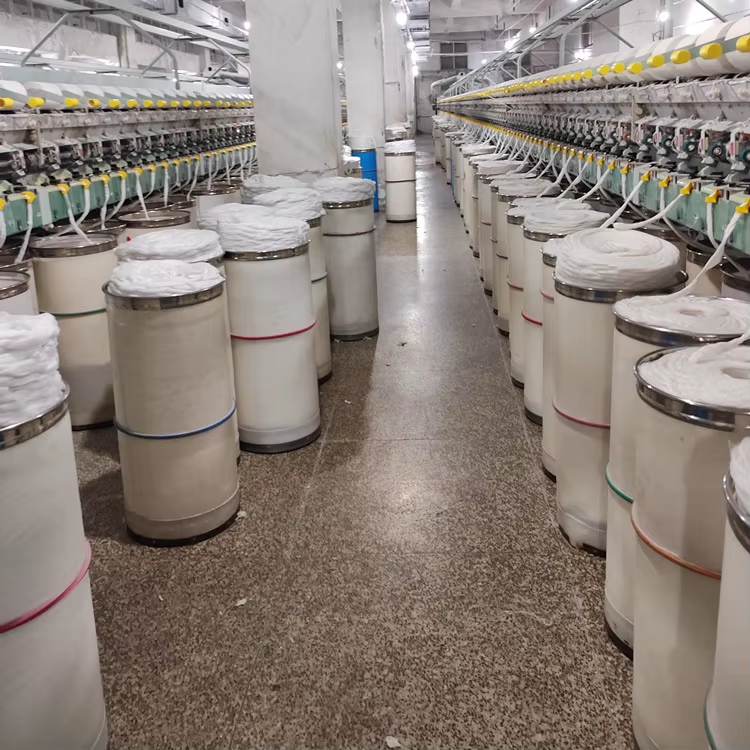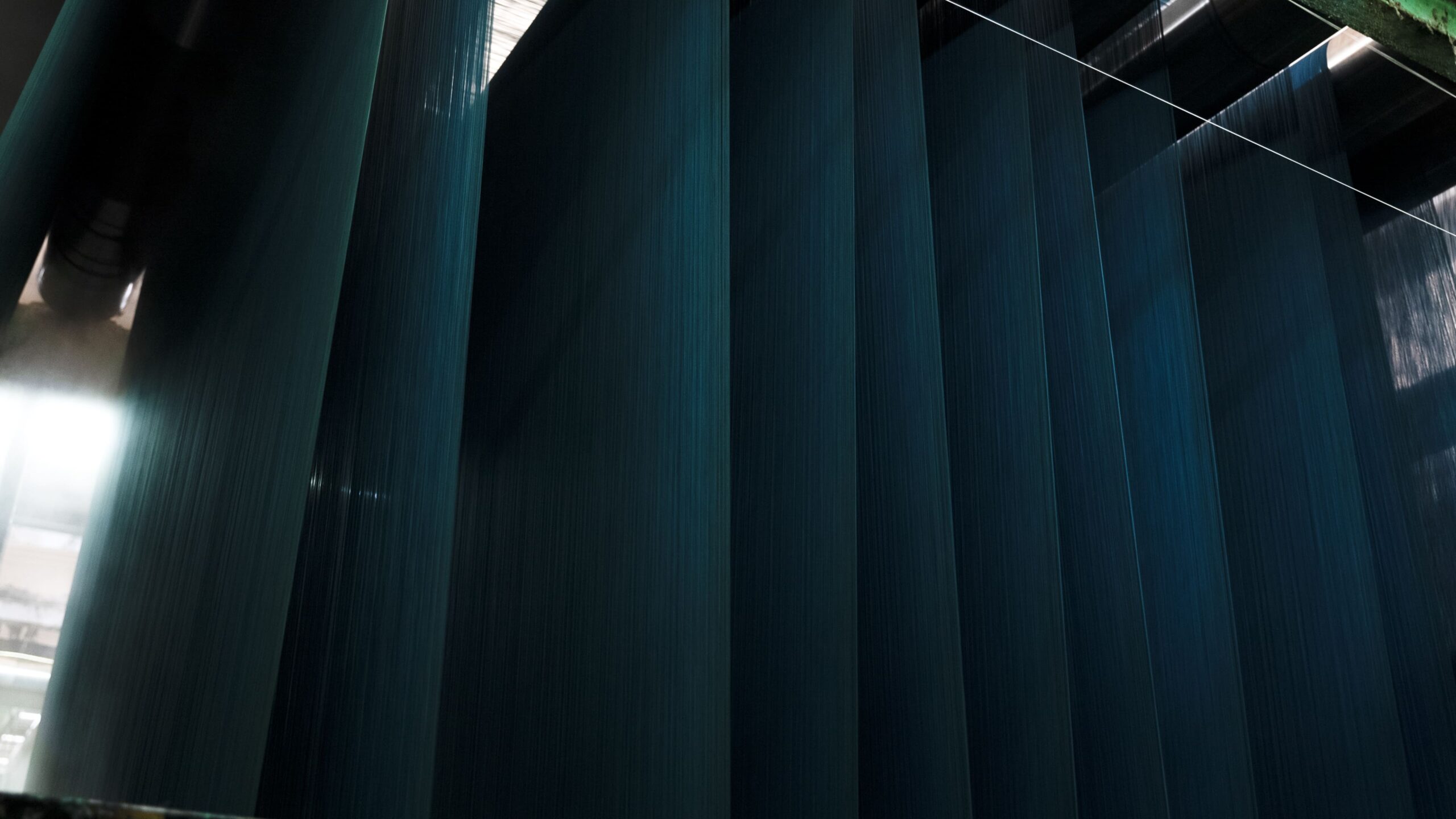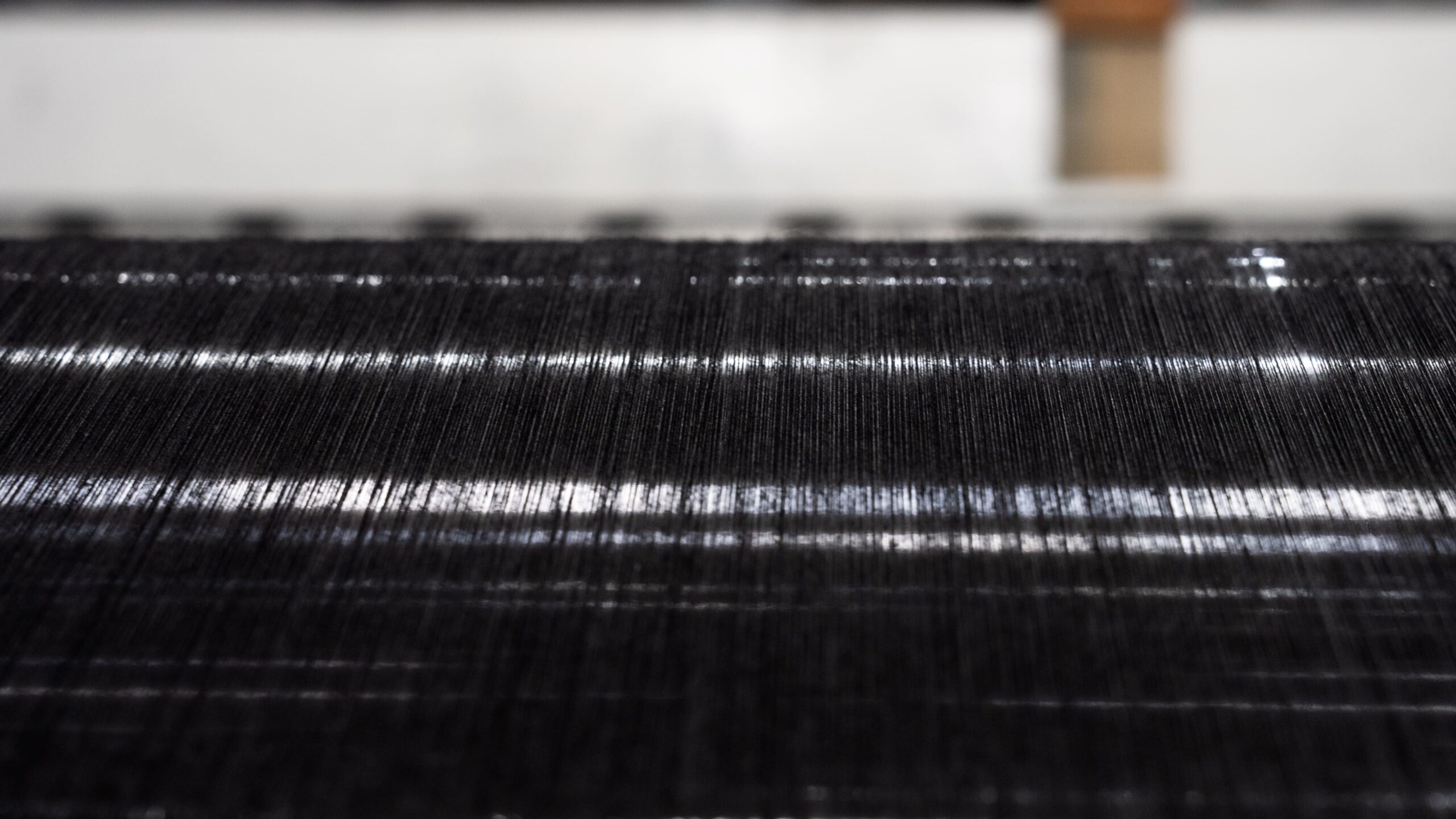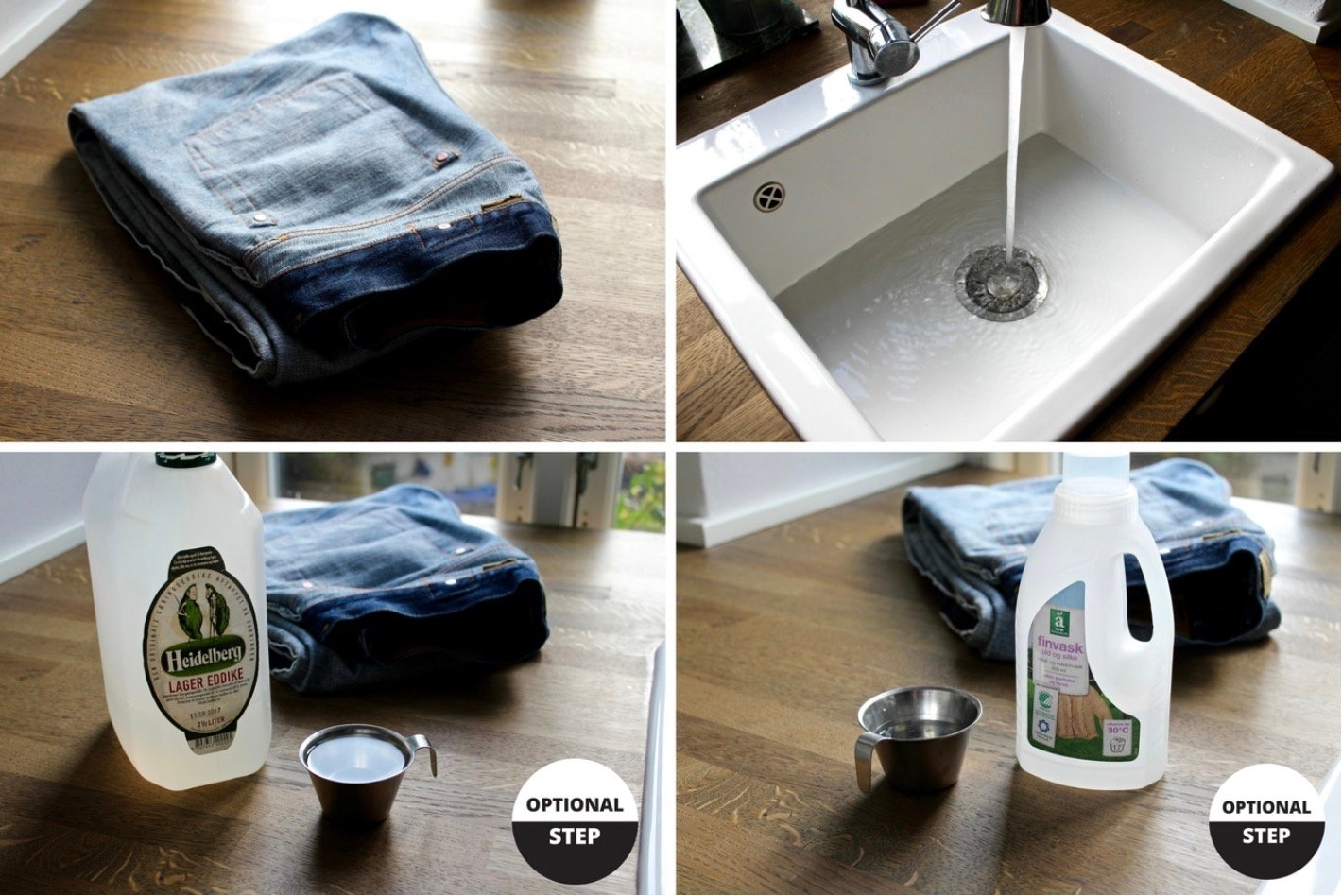Tissu denim brut : guide complet sur le denim brut et lisière

Estimated reading time:~6 minutes
Introduction
Raw denim fabric serves as a fundamental element of contemporary fashion while representing both cultural value and artisanal skill. The unique fading patterns along with personalized wear of raw denim and its frequently confused counterpart selvedge denim has established a devoted following. The article investigates raw denim fundamentals while explaining its distinctions from selvedge and regular denim through expert data validation.

Jeans of different times
What Is Raw Denim?
Raw denim or dry denim refers to the denim fabric which emerges directly from the loom without undergoing washing or dyeing or distressing processes. The fabric maintains its stiff texture as well as its deep blue color after production. Raw denim fabric weighs between 10-15 oz/sq yd according to the Textile Research Journal (2021) and starts stiff but softens through wear to develop individualized fading patterns.
- Production Process:
- Filature: Cotton fibers are spun into coarse yarns (6-30 yarn count) for durability.

Fibres de coton préparées pour le filage
- Teinture: Warp yarns are dyed with indigo, while weft yarns remain white, creating the classic denim look.

Teinture
- Tissage: A twill weave produces a sturdy fabric with a diagonal pattern.

- No Treatment: The fabric skips washing or pre-shrinking, preserving its raw state.
Denim expert Thomas notes, “Raw denim’s appeal lies in its ability to tell a story—your wear patterns create a unique patina” (Chasseurs de denim).
- Filature: Cotton fibers are spun into coarse yarns (6-30 yarn count) for durability.
Raw Denim Characteristics
- Unwashed: Retains its natural state, untouched by water or chemicals.
- Stiff Texture: Requires 3-6 months of wear to break in and mold to the body.
- Deep Indigo: Offers a rich blue hue that fades uniquely over time.
- Personalized Fading: Develops wear marks based on the wearer’s lifestyle.
A 2022 Bureau Veritas study found that raw denim retains 85% of its colorfastness after 30 cold-water washes, outperforming regular washed denim’s 80%.
Original denim jeans
What Is Selvedge Denim?
Selvedge denim or selvage denim derives its name from traditional shuttle looms which create a fabric that has self-finished edges that stop fraying. These edges that show through pant legs with red or orange stitching are typical for high-quality fabrics. Selvedge denim measures at 28-36 inches in width according to Textile Testing International (2023) because the production process is slower and more artisanal compared to regular denim which measures at 60 inches.
- Production Features:
- Uses vintage shuttle looms, which are less efficient but produce tighter weaves.
- Self-finished edges enhance durability and aesthetics.
- Often sold as raw denim but can be pre-washed.
A Levi Strauss & Co. spokesperson explains, “Selvedge denim is about weaving technique, while raw denim refers to the fabric’s untreated state—they’re not the same” (Levi’s Blog).
Selvedge Denim Characteristics
- Self-Finished Edge: Visible clean edges, often with colored threads, add a premium look.
- Dense Weave: Offers a tensile strength of 80-100 lbs/sq in, per Journal de recherche textile (2021).
- Unique Texture: Slight irregularities from shuttle looms create a vintage charm.
- Higher Cost: Artisanal production increases costs compared to regular denim.
Raw Denim vs. Selvedge Denim: Key Differences
While raw denim and selvedge denim are often conflated, they are distinct concepts. Below is a detailed comparison:
| Aspect | Denim brut | Denim Selvedge |
|---|---|---|
| Definition | Untreated, unwashed denim | Denim woven on shuttle looms with self-finished edges |
| Weaving Method | Can be produced on any loom | Produced exclusively on shuttle looms |
| Apparence | Stiff, deep indigo, fades with wear | Self-finished edge, often with colored threads |
| Durabilité | Tensile strength of 70-90 lbs/sq in | Denser, with tensile strength of 80-100 lbs/sq in |
| Price | Varies, often pricier due to raw state | Typically more expensive due to artisanal process |
| Fading Effect | Personalized fades after months of wear | Similar fades if raw, with unique edge detail |
Fashion blogger Sarah Ahmed states, “Raw denim is about your journey—fades tell your story. Selvedge denim is about craftsmanship, with its iconic edges” (Le Blog Jeans).

Raw Denim vs. Selvedge Denim
Raw Denim vs. Regular Denim
Regular denim is typically pre-washed or pre-shrunk, offering immediate softness and comfort but lacking raw denim’s potential for personalized fading.
- Treatment: Regular denim undergoes washing or chemical treatments; raw denim remains untouched.
- Confort: Regular denim is softer out of the box; raw denim requires a break-in period of 3-6 months.
- Durabilité: Both are comparable, but raw denim’s untreated state may wear faster in high-stress areas.
A 2023 Denimologie survey revealed that 65% of denim enthusiasts choose raw denim for its fading potential, while 40% prefer regular denim for instant comfort (Denimologie).
Selvedge vs. Non-Selvedge Denim
Non-selvedge denim, produced on modern high-speed looms, prioritizes efficiency over craftsmanship.
- Production Efficiency: Non-selvedge denim is woven at up to 60 inches wide, reducing costs.
- Edge Treatment: Non-selvedge edges require overlocking to prevent fraying, unlike selvedge’s self-finished edges.
- Aesthetics: Selvedge denim’s artisanal weave and edges offer a vintage appeal.
Journal de recherche textile (2021) found selvedge denim’s tensile strength to be 10-15% higher than non-selvedge denim, though daily wear durability is similar.
2025 Trends and Data
- Market Growth: The global denim market is projected to reach $90.3 billion by 2027, with a 4.2% CAGR from 2020-2027 (Recherche Grand View).
- Consumer Preferences: A 2023 Denimologie survey showed 65% of denim fans prefer raw denim for its fades, and 55% value selvedge denim for its craftsmanship (Denimologie).
- Durabilité: Raw and selvedge denim, requiring minimal processing, align with 2025’s sustainable fashion trends, reducing water and chemical use.
Scénarios d'utilisation
- Raw Denim Jeans: Ideal for enthusiasts seeking personalized fades, perfect for casual wear with tees or jackets for a rugged look.
- Selvedge Denim Shirts: The self-finished edge adds sophistication, suitable for semi-formal settings like office-casual or dates.
- Selvedge Denim Jackets: Durable and stylish, versatile for streetwear or outdoor activities.

Wearing denim clothes
How to Care for Raw and Selvedge Denim?
- Denim brut: Avoid washing for 6-12 months to develop fades; use cold-water hand washing or soaking with mild detergent (Levi’s Blog).
- Denim Selvedge: Follow raw denim care if unwashed; pre-washed selvedge can be machine-washed but avoid high-heat drying.
Denim expert Nick Wooster advises, “Wash raw denim sparingly with cold water and neutral detergent to preserve its life” (Stridewise).
Entretien des jeans en denim 1

Entretien des jeans en denim 2
Conclusion
Raw denim fabric together with selvedge denim distinguish themselves through their distinctive designs and masterful construction. Raw denim lets users achieve customized fading effects while selvedge denim presents its artisanal quality through self-finished edges. Both types of denim remain fashionable because they deliver sustainable solutions with stylish designs to match various fashion requirements. The distinction between these fabrics allows you to pick the right denim piece for your wardrobe. Post your denim story in the comments section below!
Services de personnalisation
📩 Contact: malone@lydenim.com
🌐 Site Web Tissu : www.lydenim.com
🛍️ Découvrez la personnalisation : Parcourez les sélections et trouvez l'inspiration en matière de design sur MonAlibaba.
🎨 Créez votre chef-d'œuvre en denim avec LYDENIM.








